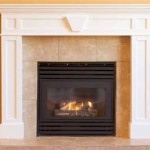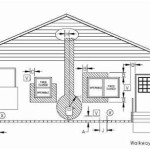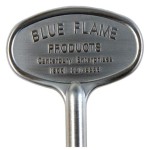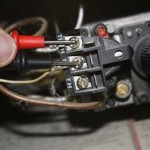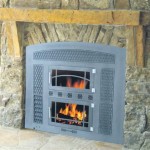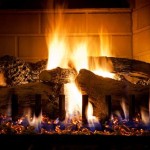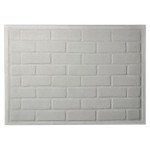Small Victorian Gas Fireplace Insert: A Blend of Heritage and Modern Convenience
The small Victorian gas fireplace insert occupies a unique niche in the home heating and decorative appliance market. It represents a confluence of historical aesthetics and contemporary technology, offering homeowners a visually appealing heating solution while simultaneously addressing concerns of efficiency and ease of use. Understanding the nuances of these inserts, from their design origins to their installation and operational considerations, is crucial for anyone considering integrating one into their home.
Victorian era design, spanning roughly from 1837 to 1901, was characterized by ornate detailing, intricate patterns, and a general appreciation for craftsmanship. Fireplaces were central features in Victorian homes, serving not only as a source of heat but also as focal points for social gatherings. Original Victorian fireplaces often featured elaborate mantels crafted from wood or marble, decorative tiles surrounding the firebox, and intricate cast iron grates. Replicating this aesthetic in a gas insert form requires careful attention to detail, capturing the essence of the period's design principles.
Modern gas fireplace inserts offer a substantial improvement over traditional wood-burning fireplaces in terms of efficiency and convenience. They eliminate the need for wood storage, chopping, and the associated mess. Furthermore, gas inserts provide consistent and controllable heat output, allowing homeowners to easily regulate the temperature of their living space. The "small" designation refers to the physical dimensions of the insert, making it suitable for smaller rooms or for replacing existing fireplaces with limited firebox openings.
Choosing a small Victorian gas fireplace insert involves navigating a range of factors, including the desired aesthetic, heating capacity, venting requirements, and installation considerations. A thorough understanding of these aspects is essential for making an informed decision that aligns with individual needs and preferences.
Aesthetic Considerations: Capturing the Victorian Spirit
The most compelling aspect of a Victorian gas fireplace insert is its design. Manufacturers often strive to emulate the characteristic features of authentic Victorian fireplaces. This includes replicating the look of cast iron detailing, incorporating faux brick or stone liners to mimic the appearance of a traditional firebox, and offering a variety of mantel options that reflect Victorian architectural styles.
Mantels are a critical component of the overall aesthetic. They are frequently crafted from wood, often featuring intricate carvings, fluted columns, and decorative moldings. Some manufacturers offer mantels made from faux stone or marble, providing a more durable and low-maintenance alternative. The mantel's size and design should be proportional to the dimensions of the firebox and the room itself.
The firebox interior is another area where attention to detail is paramount. Many inserts feature realistic-looking artificial logs, arranged to create a visually appealing flame pattern. The logs are typically made from ceramic fiber or refractory materials, designed to withstand the high temperatures generated by the gas flame. Some models offer adjustable flame height and intensity, allowing homeowners to customize the appearance of the fire.
The surround, which frames the firebox opening, is another important design element. Victorian-style surrounds often incorporate decorative tiles, cast iron embellishments, or ornate metalwork. The choice of surround materials and finishes can significantly impact the overall look of the fireplace, influencing its perceived level of authenticity and visual appeal.
Careful consideration must be given to the finishes and colors used in the insert's design. Victorian aesthetics often incorporated rich, warm colors such as deep reds, greens, and browns. Metallic accents, such as brass or bronze, were also common. Selecting an insert with finishes that complement the existing décor of the room is crucial for creating a cohesive and harmonious interior.
Technical Specifications: Heating Capacity and Venting
Beyond aesthetics, the technical specifications of a small Victorian gas fireplace insert are crucial for ensuring its suitability for a particular application. Key specifications to consider include the heating capacity, measured in British Thermal Units (BTUs), and the venting requirements.
The heating capacity of the insert should be appropriate for the size of the room it is intended to heat. Inserts with higher BTU ratings are capable of heating larger spaces, while those with lower ratings are better suited for smaller rooms. It is important to accurately assess the heating needs of the room, taking into account factors such as insulation levels, window size, and ceiling height.
Gas fireplace inserts typically utilize one of two venting systems: direct vent or vent-free. Direct vent inserts draw combustion air from outside the home and exhaust flue gases directly outside through a sealed vent system. This system is generally considered the safest and most efficient option, as it eliminates the risk of carbon monoxide leakage into the home. Vent-free inserts, on the other hand, draw combustion air from the room and exhaust flue gases back into the room. While vent-free inserts are easier to install, they are subject to more stringent safety regulations and may not be permitted in all jurisdictions due to concerns about indoor air quality.
The type of gas used by the insert is another important consideration. Gas fireplace inserts are typically designed to operate on either natural gas or propane. It is essential to select an insert that is compatible with the type of gas available in the home. Converting an insert from one type of gas to another is often possible, but it requires specialized knowledge and may void the warranty.
Energy efficiency is also a significant factor to consider. Gas fireplace inserts are rated for energy efficiency, typically expressed as a percentage. Higher efficiency ratings indicate that the insert converts a greater percentage of the fuel's energy into usable heat, reducing energy consumption and lowering heating costs. Look for inserts with high efficiency ratings and features such as thermostatic controls and programmable timers to optimize energy savings.
Installation and Maintenance: Ensuring Safe and Reliable Operation
Proper installation and regular maintenance are essential for ensuring the safe and reliable operation of a small Victorian gas fireplace insert. It is strongly recommended that installation be performed by a qualified and certified technician, who can ensure that the insert is properly connected to the gas supply, vented correctly, and complies with all applicable building codes and safety regulations.
Before installation, the existing fireplace opening should be thoroughly inspected to ensure that it is structurally sound and free from any obstructions. The chimney should be cleaned and inspected to ensure that it is properly sized and functioning correctly. If the existing chimney is not suitable for use with a gas insert, a new vent system may need to be installed.
During installation, the technician will connect the gas supply line to the insert, ensuring that all connections are tight and leak-free. The vent system will be connected to the insert and routed to the outside of the home, following the manufacturer's instructions and all applicable codes. The insert will be securely mounted in the fireplace opening, and the surrounding area will be sealed to prevent air leaks.
Regular maintenance is crucial for preventing problems and ensuring the longevity of the insert. This includes cleaning the firebox and logs periodically to remove soot and debris, inspecting the vent system for obstructions or damage, and checking the gas connections for leaks. It is also recommended to have the insert professionally inspected and serviced annually by a qualified technician.
Safety is paramount when operating a gas fireplace insert. It is essential to follow all of the manufacturer's instructions and safety guidelines. Never leave the insert unattended while it is operating, and keep flammable materials away from the firebox. Install carbon monoxide detectors in the home to provide early warning of any potential carbon monoxide leaks. If you suspect a gas leak, immediately turn off the gas supply to the insert and contact a qualified technician.
The integration of a small Victorian gas fireplace insert into a home represents a thoughtful balancing act between historical aesthetics and modern technology. By carefully considering the design elements, technical specifications, and installation requirements, homeowners can effectively enhance the character of their living space while enjoying the convenience and efficiency of a modern heating appliance. Selecting a unit that appropriately marries these characteristics is crucial for long-term satisfaction and optimal performance.

Belmont Small Gas Insert

Belmont Small Gas Insert

Enviro S Gas Q1 Insert

Windsor Small Victorian Style Gas Insert

Windsor Small Victorian Style Gas Insert

Belmont Small Gas Insert Old Fireplace

Belmont Small Gas Insert

Regal Cast Iron Fireplace Insert 36 75 Victorian

Windsor Small Victorian Style Gas Insert

Stovax Victorian 16 Tiled Fronts Solid Fuel Bonfire
Related Posts

